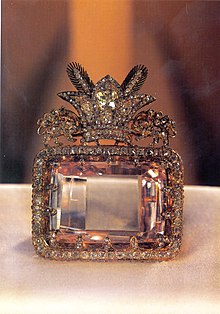The FIFA World Cup, often simply called the World Cup, is an international association football competition contested by the seniormen's national teams of the members of Fédération Internationale de Football Association (FIFA), the sport's global governing body. The championship has been awarded every four years since the inaugural tournament in 1930, except in 1942 and 1946 when it was not held because of the Second World War. The current champion is Germany, which won its fourth title at the 2014 tournamentin Brazil.
The current format of the competition involves a qualification phase, which currently takes place over the preceding three years, to determine which teams qualify for the tournament phase, which is often called the World Cup Finals. 32 teams, including the automatically qualifying host nation(s), compete in the tournament phase for the title at venues within the host nation(s) over a period of about a month.
The 20 World Cup tournaments have been won by eight different national teams. Brazil have won five times, and they are the only team to have played in every tournament. The other World Cup winners are Germany and Italy, with four titles each; Argentina and inaugural winners Uruguay, with two titles each; and England, France and Spain, with one title each.
The World Cup is the most widely viewed and followed sporting event in the world, exceeding even the Olympic Games; the cumulative audience of all matches of the 2006 FIFA World Cup was estimated to be 26.29 billion with an estimated 715.1 million people watching the final match, a ninth of the entire population of the planet.[1][2][3][4]
The 2014 World Cup took place in Brazil. The next two World Cups will be hosted by Russia in 2018 and Qatar in 2022. Both choices have been criticised in the media; Russia in light of the 2014 Crimean crisis and Qatar for allegations of vote-buying and poor working conditions for foreign workers.
By May 2015, the games were under a particularly dark cloud because of the 2015 FIFA corruption case, allegations and criminal charges of bribery, fraud and money laundering to corrupt the issuing of media and marketing rights (rigged bids) for FIFA games,[5]with FIFA officials accused of taking bribes totaling more than $150 million over 24 years. In late May, the U.S. Justice Department announced a 47-count indictment with charges of racketeering, wire fraud and money laundering conspiracy against 14 people. Arrests of over a dozen FIFA officials were made since that time, particularly on May 29 and December 3.[6]
On June 10, 2015, FIFA postponed the bidding process for the 2026 FIFA World Cup in light of the allegations surrounding bribery in the awarding of the 2018 and 2022 tournaments. Secretary general Valcke stated that "Due to the situation, I think it's nonsense to start any bidding process for the time being."[7]






